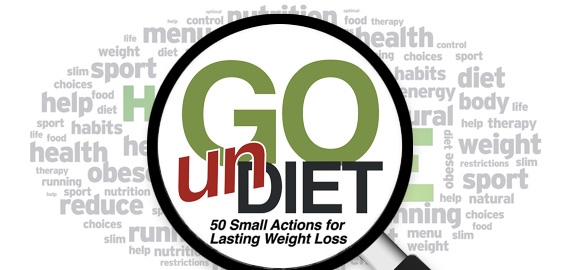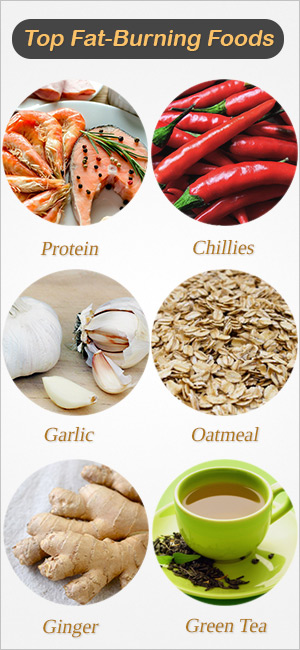Why Diaphragmatic Breathing 24/7 Is Crucial To Fight Obesity
Recent medical discoveries suggest that obesity and insulin resistance are caused by ... low levels of oxygen in body cells. When our bodies suffer from cell hypoxia (reduced O2 levels), our tissues increase production of HIF-1 (hypoxia inducible factor-1). And this is the chemical that directly leads to weight gain and obesity.
Research scientists from the Touchstone Diabetes Center (University of Texas Southwestern Medical Center in Dallas) even declared their discovery in the title "Hypoxia-inducible factor 1alpha induces fibrosis and insulin resistance in white adipose tissue" (Halberg et al, 2009). This study was published in the Molecular and Cellular Biology Journal.
A team of French scientists also announced their finding in the title "Hypoxia decreases insulin signaling pathways in adipocytes" (Regazzetti et al, 2009) - published in Diabetes Journal.
Last year, in 2010, Australian scientists from the Garvan Institute of Medical Research in Sydney published a study "Hypoxia-inducible factor-1alpha regulates beta cell function in mouse and human islets" (Cheng et al, 2010).
All these and several other recent publications tell us that obesity of modulated by low levels of oxygen in body cells.
How It Relates to Diaphragmatic Breathing
Your diaphragm allows you to manage successful and nearly ideal O2 transportation to cells and (partial) CO2 removal. Note that, even though most modern day men and women believe in the idea that breathing more brings us more oxygen, hundreds of studies claim the opposite: when we breathe slower and less air (but with the diaphragm!) we get more oxygen in body cells. What is the cause?
Very small normal breathing (medical norm) provides our hemoglobin cells in the arterial bloodstream with about 98-99% O2 saturation. This is a result of mainly diaphragmatic breathing in the respiratory process.
Chest breathing is generally much larger and also deeper (up to 12-18 L/min for minute air flow instead of normal 6 L/min, 700-900 mL for tidal amount instead of 500 mL, and 18-25 breaths/minute for breathing frequency instead of 10-12 breaths only), but oxygen levels in blood are generally lessened as a result of the inhomogeneous gas exchange: lower regions of the lungs doesn't obtain fresh air supply in the course of upper chest breathing. (Do you know that lower parts of the lungs, due to gravity, get about 6-7 times more blood flow in comparison with the upper parts of the lungs?)
Secondly, diaphragmatic breathing triggers natural massage of the lymphatic nodes found just below the diaphragm. The lymphatic system, or the sewage system of the human body, doesn't employ a pump. For that reason, the lymph nodes can be found around those regions of one's body exactly where normal compression is actually developed. By way of example, we've got substantial number of lymph nodes on our neck. In the daytime, most people do countless actions with our head. Therefore, the lymphatic liquid will be pressed via valves out developing normal drainage of the lymphatic system. In a similar fashion, we've got plenty of lymph nodes under arms and surrounding regions, in order that when you move our arms, the lymph nodes get normal massage to eliminate unwanted substances.
Nonetheless, the lymph nodes from your pancreas, stomach, kidneys, liver, spleen, both colons, along with internal organs can be found just underneath your diaphragm.
Consequently, mother nature wants us all to be able to respire while using the diaphragm 24/7. When we have upper body breathing, we motivate bodily pollution along with deposition of waste products within tummy important internal organs.
Most contemporary men and women have got just close to 20-25 seconds of oxygen in the entire body for the body oxygen test (stress-free breath holding examination carried out immediately after standard exhale and only until the primary stress) because their breathing is approximately two times greater compared to the medical norm. Indeed, a hundred years ago people had about twice better results for this body oxygen test. This really is due to the fact their breathing had been slower and lighter. Old medical studies say that normal people used to breathe only 4-5 L of air per minute at rest, while modern people breathe more than 12 L/min.
Overbreathing cuts down CO2 concentration in all muscle groups, such as the diaphragm. Given that CARBON DIOXIDE is really a relaxant of all muscles of the human body, hyperventilation produces a condition of spasm in the tissues of the diaphragm.
In the sick people, the situation with oxygen in cells and breathing is even worse. Their breathing is heavier during rest and they've got even smaller amounts O2 and CO2 in body cells. Hence, virtually they all are chest breathers.
On the list of approaches which can be helpful regarding diaphragmatic breathing are: Oxygen Remedy technique, the Buteyko breathing therapy, Frolov breathing device, Amazing DIY breathing device, Strelnikova respiratory gymnastic, and hatha yoga breathing exercises.
Clinical experience of about 200 Russian MDs (who teach the Buteyko breathing technique) suggests that people naturally acquire diaphragmatic breathing days and nights, when they have more than 30 s for the body oxygen test.
References
Mol Cell Biol. 2009 Aug;29(16):4467-83.
Hypoxia-inducible factor 1alpha induces fibrosis and insulin resistance in white adipose tissue.
Halberg N, Khan T, Trujillo ME, Wernstedt-Asterholm I, Attie AD, Sherwani S, Wang ZV, Landskroner-Eiger S, Dineen S, Magalang UJ, Brekken RA, Scherer PE.
Diabetes. 2009 Jan;58(1):95-103.
Hypoxia decreases insulin signaling pathways in adipocytes.
Regazzetti C, Peraldi P, Grémeaux T, Najem-Lendom R, Ben-Sahra I, Cormont M, Bost F, Le Marchand-Brustel Y, Tanti JF, Giorgetti-Peraldi S.
J Clin Invest. 2010 Jun 1;120(6):2171-83.
Hypoxia-inducible factor-1alpha regulates beta cell function in mouse and human islets.
Cheng K, Ho K, Stokes R, Scott C, Lau SM, Hawthorne WJ, O'Connell PJ, Loudovaris T, Kay TW, Kulkarni RN, Okada T, Wang XL, Yim SH, Shah Y, Grey ST, Biankin AV, Kench JG, Laybutt DR, Gonzalez FJ, Kahn CR, Gunton JE.
-
The Boise Weight Loss Clinic presents The Sleep-Weight Loss Connection
Did you know that poor sleep can often h
-
7 Reasons You Are Still Hungry — Even Though You Just Ate!
Do you find yourself fee
-
How to Exercise at Home
Vico Images/Alin Dragulin via Getty Images We
-
Fast Weight Loss - What You Eat Matters
For any weight loss program to be succes
-
Fast Weight Loss Tips for Teenage Girls
So, the pizzas, burgers, French fries and sodas have done their trick?
-
You Can Find Success With Your Weight Loss Efforts
Your weight and your health do not necessarily go hand in hand.
- DON'T MISS
- Use The Rock Band Strategy for Getting Consistent Publicity
- Ectomorph Workout - 3 Workout Secrets For The Skinny Ectomorph
- Choosing The Right Weight Loss Plans
- The Truth Behind Anti-Cellulite Shorts - Do They Really Work and Why
- Thyroid disease can have significant effects on fertility, pregnancy, suggests a new review
- White tongue causes, symptoms, and natural home remedies
- Low Carb Beer Not So Skinny
- Close Kept Secrets To Weight Loss Lesson 44
- 7 Tips To Stop Overeating
- Advantages Of Using A Coach For Weight Loss




